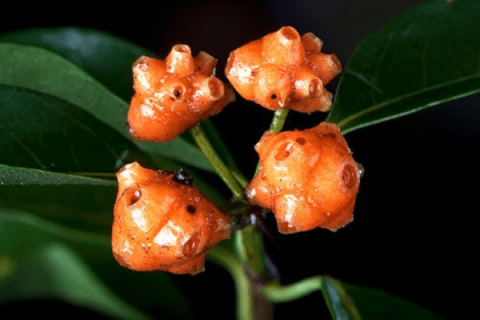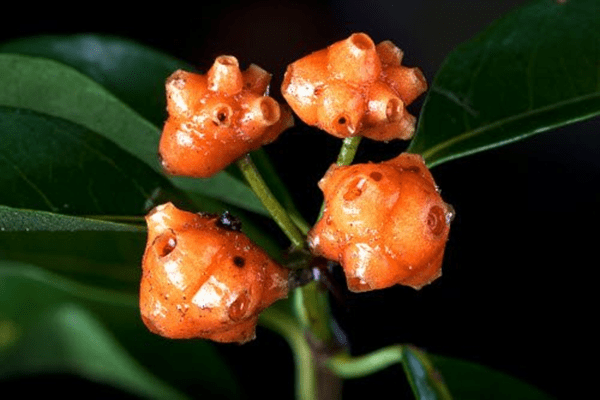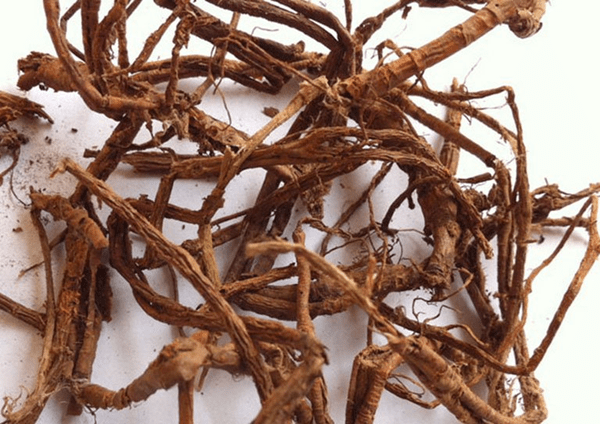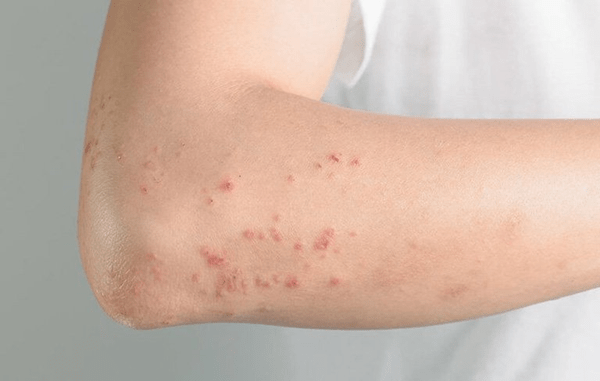Devils face plant: is the medicine as scary as the name?

Devil's face tree is also known as Noni canopy, Devil's face, Brick, Ground wire, scientific name Morinda umbellata L., coffee family (Rubiaceae) . The plant is often used as an effective remedy for boils and allergies. Let's learn more about this plant right below.
content
- 1. Description of medicinal herbs
- 2. Parts used and prepared
- 3. Chemical composition of devil's face plant
- 4. Pharmacological properties
- 5. Uses, dosage
- 6. Experiential remedy from the devil's face tree
1. Description of medicinal herbs
- The tree is spreading or climbing, up to 10 m.
- Leaves are oblong, broad, oblong, oval, or spear-shaped, tapering at base, obtuse or tail and pointed at tip, 2–12.5 cm long by 4 cm wide, smooth or hairy on face lower, 4 - 6 pairs of auxiliary veins, 1cm long stalk, triangular leaves, 2 - 5mm high.
- Flowers are arranged in apical clusters about 6 mm in diameter at the top of the branches or in a canopy arrangement. Flowers white, corolla tubular hairy in the neck region, lobes 4 tapered.
- Fruit consists of conjoined nodes, 8-10mm wide, nearly spherical, flattened, rough surface, with a core 4mm high, 2mm thick. Each node contains 1 seed.

The fruit has a rough surface, monstrous shape like a demon.
2. Parts used and prepared
2.1 Parts of the Devil's Face Tree
In Eastern medicine, people use roots and leaves to make medicine.
2.2 Preparation
- Leaves and stems can be harvested all year round, the leaves can be used fresh and applied topically.
- The roots are usually harvested in spring or autumn. After digging, wash and remove the roots , soak in warm water , cut short and dry .
- Usually used without any other processing. But depending on the pathology, it may be slightly yellow or impregnated with alcohol .
3. Chemical composition of devil's face plant
Devil's face root contains anthraquinone and glucoside derivatives.

The roots of the plant have the effect of treating itching and worms
4. Pharmacological properties
- The leaf extract has antibacterial activity against Bacillus megaterium, B. subtilis, E. coli, K. pneumonia, M. luteus, P. aeruginosa, S. typhi, S. flexneri, S. aureus.
- Study evaluating different solvent extracts of devil's face leaves with mast cell stabilizing and anti-anaphylactoid effects . Methanolic, n-hexane and chloroform leaf extracts were shown to counteract peritoneal mast cell degranulation.
- An anaphylactic shock study in the legs of animals, then treated with ethanolic and n-hexane extracts of the leaves showed a significant reduction in edema due to a decrease in albumin levels . Phenolic and flavonoid compounds in the leaves contributed to their inhibitory effect on antigen-induced mast cell degranulation and antianaphylaxis.
5. Uses, dosage
Traditional medicine
- Devil's face tree has a sweet and warm taste
- Uses: Clear fire, clear heat, help kidney, strengthen tendons and bones.
- Treatment of rheumatic diseases, boils, dysentery, deworming. In Vietnamese folk medicine, it is used to treat boils , dysentery and skin diseases . The above ground part is used to treat fever, cough, abdominal pain, rheumatism, acute hepatitis.
Modern medicine
- The roots are used as a strong bleach in the US
- The leaves , combined with some medicinal herbs, are used as a decoction to treat diarrhea, dysentery , indigestion, syphilis, and gonorrhea.
- In the Western Ghats of the state of Kerala (India), the plant is used to treat diabetes, high blood pressure, and muscle aches.
In addition, the fruit is also used to cook in Indian curries, the trunk is used to make raw rope in Sri Lanka.
Dosage
8-20 grams used as a decoction.
6. Experiential remedy from the devil's face tree
6.1 Itching
- Preparation: 1 handful of devil's face leaves.
- Implementation: The above medicinal herbs are washed and crushed. Then gently rub it on the affected area. Can be combined with medicinal rhizome decoction to drink at a dose of 10-15g per day.

Leaves to treat itching
6.2 Joint pain from devil's face tree
- Remedy 1: 10g devil's face tree, 10g mother of pearl bark and 15g clover root. color with 600ml of water. Sac on low heat to collect 200ml of medicine. Filter out the residue and divide it into 2 drinks after lunch and dinner. Each course is maintained continuously for 10 days.
- Remedy 2: 12 - 20g devil's face plant. Put it in a kettle to get water, remove the residue, and drink it instead of tea every day. Absolutely do not use decoction throughout the day.
- Remedy 3: 10g devil's face tree, 10g copper broom root, 10g scratched grass root and 10g mother of pearl. The decoction of water, remove the residue, drink 1 month a day.
See also: Pain relief: In musculoskeletal diseases
6.3 Using devil's face plant to treat worms and dysentery
- Preparation: 10 - 16g root bark.
- Implementation: wash and warm, add 1 liter of water. Sac take 300ml of medicine, remove the residue and divide it into 3 doses, use 1 scale/day.
Thus, the devil's face is an effective remedy for boils, allergies, worms, dysentery, and joint pain when combined with other medicinal herbs. However, readers should not arbitrarily combine drugs without consulting a doctor, to limit unwanted effects.
Doctor Nguyen Thi Thien Huong